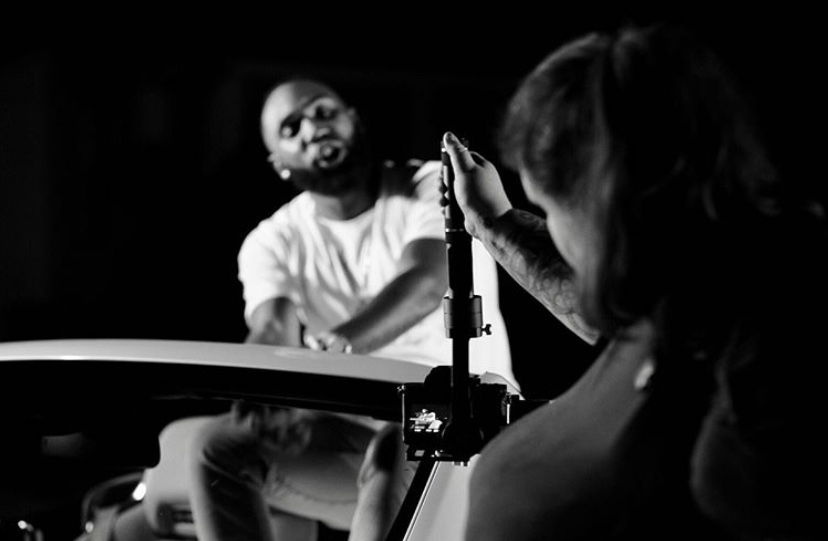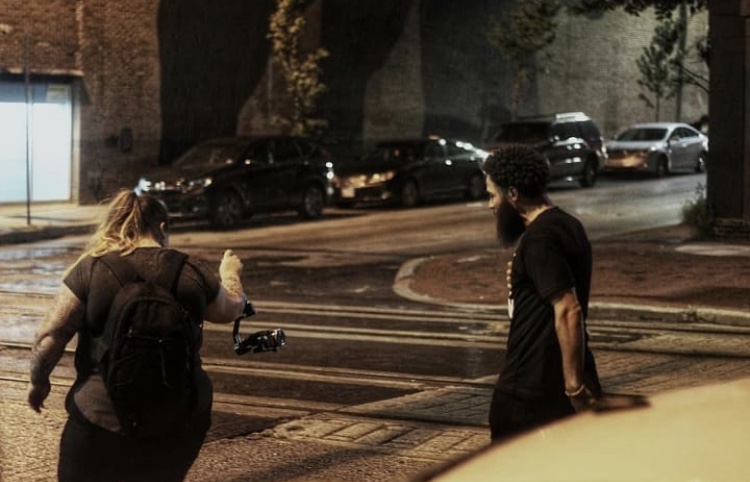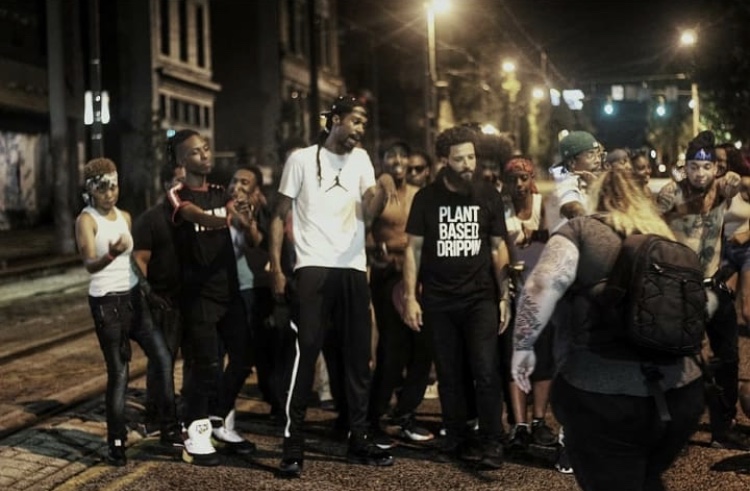
Breaking into the male-dominated world of music videos with Maggie Rudisill ’15
Wednesday, September 28th, 2022

Maggie Rudisill may have graduated from Pennsylvania College of Art & Design in 2015 with her Photography BFA, but her history with the College goes back long before that.
The groundbreaking videographer — she’s successfully broken into the male-dominated music video industry — started taking all-ages classes at PCA&D as a child and then, in high school took a black-and-white photography class for beginners that ended up changing the trajectory of her life.
“That course in high school is actually what solidified my decision to come to PCA&D and pick photography as a major,” Rudisill says.
Now based out of Baltimore, Rudisill says she’s been “super lucky” to already have crossed off lots of her career bucket-list experiences, “from working with dream clients to having videos featured on some of the biggest music channels on TV.” We talked with her about how she got her start in the business, and what impact PCA&D continues to have on her career.
What really pushed you into exploring videography – music videos, specifically — as a career?
Maggie Rudisill: About halfway through college I upgraded my camera. It was my first camera that did not just take photos, but video as well. The day I brought it home I filmed my first music video with friends of mine. They made music, and I was dying to try my camera out, so it just made sense. The Intro to Video course at PCA&D helped push my interest as well and I continued shooting music videos with friends and turned a documentary photography series I had been working on about Coney Island into a film instead for my senior project. This was the first documentary I made and later (it) went on to be my first solo video show. I always loved photography, but video just brought out a spark of passion that I didn’t know existed for me.
Directing music videos seems to notoriously be a “guys’ club.” What advice do you have for women/non-binary people who think they’d like to dive into the field?
MR: It is absolutely a guys’ club! So much of the business I get is from online and social media sources, so there were a lot of clients early on in my career who never realized they were hiring a woman until the day I actually showed up to film. It was definitely something I struggled with at first. A lot of clients were amazing, totally accepting, and excited to work with a female but I had my fair share that felt I couldn’t do the job or wouldn’t be as good as they anticipated. Throughout the years I have learned what makes me different is actually one of my best assets! Being a woman in a predominantly male field allows me to bring a different perspective to set and makes me stand out. I used to shy away from posting myself and announcing I was a female videographer on my social media but now it is front and center on my page.

Maggie Rudisill, left, works on a city video set at night.
How does your photography affect your video work and vice versa?
MR: I think coming from a background in photography was difficult at first. My videos lacked movement and I tried shooting them how I would a photo. Over the years, though, it has become a key part of my style. Starting with photography has taught me so much about composition that when I am doing video that is one of the main things I focus on. When shooting music videos I am constantly paying attention to how the artist is filling up the space and working with the environment around them the same way I would a photograph. I’ve just had to learn to move around while doing it.
How did your PCA&D experience prepare you for your first steps in your career?
MR: PCA&D allowed me to explore all aspects of photography and led me to figure out what I was most passionate about. Once I decided video was the specific direction I wanted to go in my (professors) allowed me to incorporate it into my assignments. I knew what direction I wanted to take my career in when I left school and continued to grow on my own. PCA&D gave me a great foundation to build off of and create my own style. I learned the basics of all aspects of photography/video like lighting, storytelling, directing your subject … the list goes on. Having a strong foundation is what has allowed me to grow and flourish on my own.

Maggie Rudisill, right, directs performers during a night video shoot.
When you think back to your time at PCA&D, what’s a memory that really stands out for you?
MR: One of the most important and impactful lessons I learned while in PCA&D came from my professor Eric Weeks. We had an assignment and I chose to take my living room furniture outside and photograph my friends yelling. At the time, my roommate and friends who could participate were all Black men. In my mind, I was just doing a quirky, fun project with the friends I was with that day, but Prof. Weeks challenged me to think about the meaning and what my photographs were saying. It was like a light switch flipped in my head and photography went from something fun to do with friends to a way I could really express myself, talk about important issues, and make others feel and think things.
Whose video work and/or photography do you really admire these days?
MR: A Zae Productions and Reel Goats are two of my favorite music video directors. I look up to A Zae’s camera movement and energetic edits and love the way Reel Goats tells a story.
What would your dream assignment look like?
MR: … Documentary-style shooting is still one of my favorite genres, so I would love to work on a large-scale documentary with some of the amazing videographers and directors I’ve met along my journey.
Top photo: Maggie Rudisill ”15, Photography, in the foreground, sets up a music video shot. All photos courtesy Maggie Rudisill.
Click play on these Maggie Rudisill music videos:
